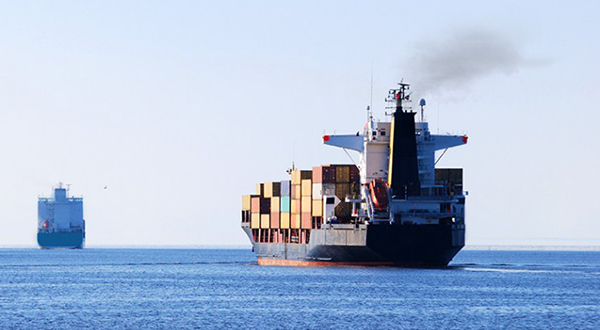The California Air Resources Board (ARB) has released its draft report, entitled as ‘Heavy-Duty Technology and Fuels Assessment: Overview’ to provide an overview and status update on the heavy duty technology, including marine vessels, and fuels available, including low sulphur diesel and LNG.
Ocean-Going Vessel Efficiency Improvements
There are numerous technologies and efficiency improvements available that can reduce emissions from ocean-going vessels (OGV). These include systems for recycling heat energy, advanced designs for hull, propellers and rudders, optimization of the draft and speed for a given route and arrival time, and monitoring the fouling of hulls and propellers. Engine technologies are also an essential factor for achieving the potential benefits, and could include electronic controls that improve fuel efficiency, LNG engines, or diesel engines with SCR after-treatment.
Collaborative efforts are underway to better understand the opportunities these technologies could potentially provide. The two major OGV engine manufacturers, MAN Diesel & Turbo and Wärtsilä, have worked together since 2002 to develop new technologies for marine engines that will increase engine efficiency and reduce fuel consumption and CO2 emissions, reduce gaseous and particulate matter emissions, and increase engine reliability. This work was expected to reach completion by 2015. Another effort, the “Green Ship of the Future,” is a joint effort to reduce CO2 by 30 percent, sulfur oxides (SOx) by 90 percent, and NOx by 90 percent with the focus on ship design, machinery, propulsion, operation and logistics. Today, this open privatepublic partnership has about 40 companies working together to identify innovative technologies and operational strategies to meet the Green Ship of the Future emission reduction targets. These efforts are being driven in part by GHG and NOx emissions requirements developed by the International Maritime Organization, but no completion date has been established to implement these voluntary efforts on a wider scale.
Finally, a more recent effort by the European Research Association, “Vessels for the Future,” is focusing on ambitious emissions reduction goals for 2050. Specifically, the initiative is hoping to reduce vessel CO2 emissions by 80 percent, and NOx and SOx emissions by nearly 100 percent. This effort would be a public-private partnership composed of private companies, research institutes, academic organizations and other interested associations. The group is planning to target research in several maritime technologies: new materials and processes, fuels and propulsion systems, information and communication technology, hull water interaction, energy management and novel vessel design concepts.
Potential Reductions from Ocean-Going Vessels
Aftertreatment is not currently used in slow speed ocean-going vessel engines because engines can meet current standards without them. Use of liquefied natural gas (LNG) in the marine sector may increase when diesel prices are high, and many manufacturers offer LNG as an option in dual fuel applications, and even as a retrofit option for existing engines. Use of LNG in dual fuel applications can reduce PM, NOx, and SOx in ECA areas, and might reduceCO2. Further analysis is currently being conducted to determine if use of LN
G in ocean-going vessel applications may provide a GHG benefit using a fuel life-cycle analysis relative to traditionally fueled ships. In LNG applications, fuel storage, delivery, and on-board tanks are issues that would need to be addressed, and lower emissions standards would be necessary to ensure NOx benefits.
GHG benefits will depend on the source of methane and upstream emissions associated with production and distribution of that fuel internationally where the fuel is supplied. Other technologies such as shore power or capturing and treating emissions while at berth can reduce emissions in port communities, and in some cases these technologies are already required. Overall a mix of technologies will most likely be necessary to achieve near-zero emissions levels.
Further information may be found by reading the report below:
In the start, I was forthright with you propecia before and after has changed my being. It has become much more fun, and now I have to run. Just as it is incredible to sit.































































